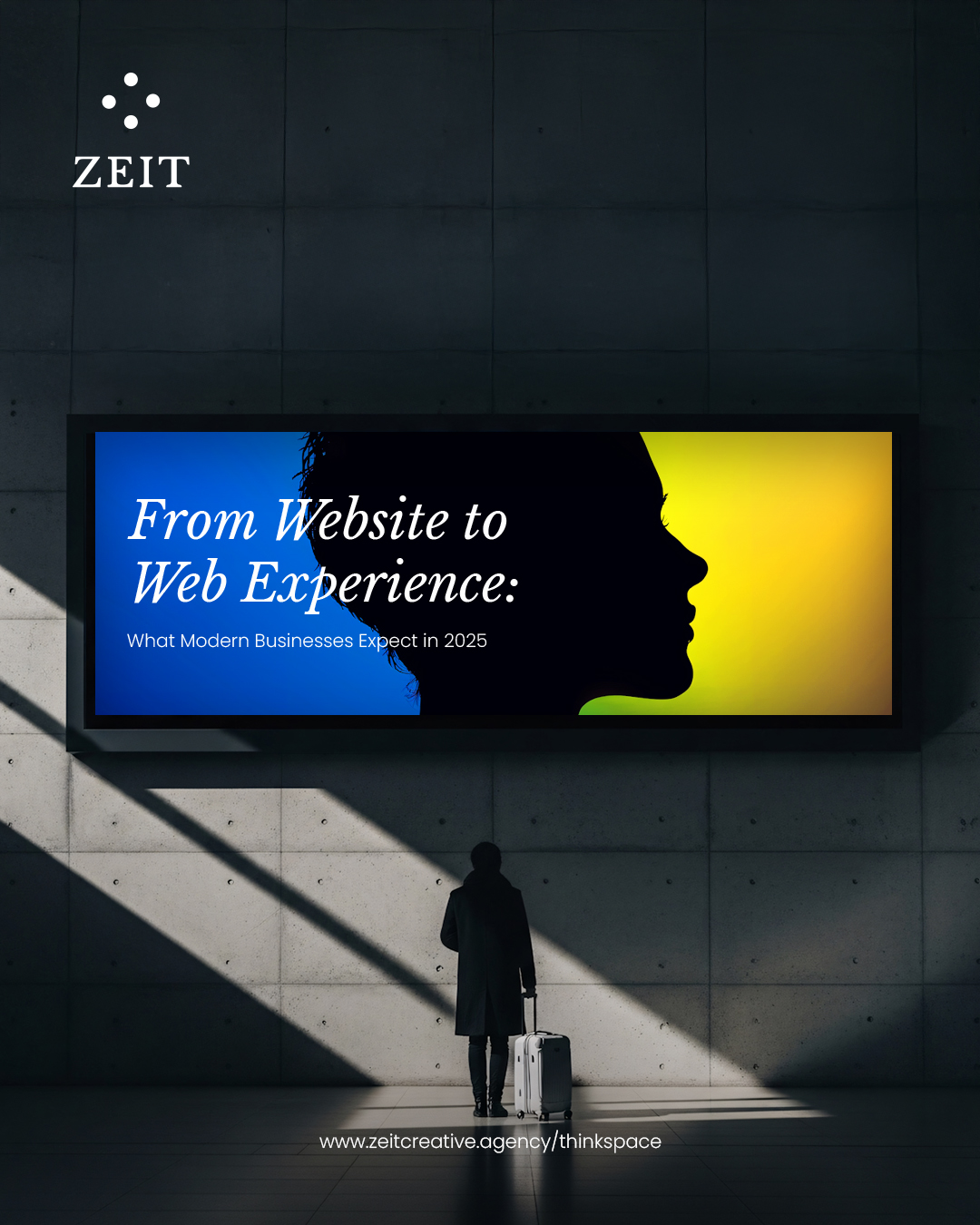In 2025, a business website is no longer just a digital brochure. It has evolved into a full-fledged web experience, shaping how customers perceive your brand, engage with your content, and ultimately make decisions. Modern businesses are increasingly realising that their website is the first, and often most important, touchpoint with their audience.
This shift from traditional websites to immersive, interactive web experiences is driven by changing consumer expectations, technological advancements, and the need for brands to differentiate themselves in a crowded digital landscape.
Why Web Experiences Matter
Gone are the days when a visually appealing homepage was enough. Today, users expect more than static content; they want interactivity, personalisation, and seamless performance. A strong web experience:
- Builds trust: Users judge your brand by the quality, speed, and reliability of your website.
- Engages visitors: Interactive content, animations, and smart navigation keep users invested.
- Drives conversions: A well-designed experience guides users toward actions, whether making a purchase, signing up for services, or enquiring about products.
Modern businesses now view their websites as dynamic platforms where every interaction matters
Key Expectations for Web Experiences in 2025
- Speed and Performance
Website load times have a direct impact on engagement and SEO. Research shows that even a few seconds of delay can significantly increase bounce rates. Businesses must optimise:
- Mobile and desktop loading speeds
- Efficient image and media management
- Clean code and lightweight frameworks
- Mobile-First Design
With over 70% of web traffic coming from mobile devices, responsive and mobile-optimised designs are no longer optional. Mobile-first design ensures that:
- Content displays perfectly on small screens
- Navigation is intuitive with touch-friendly elements
- Mobile users receive the same quality experience as desktop visitors
- Immersive and Interactive Features
Modern web experiences incorporate elements that engage users actively:
- Micro-interactions (hover effects, animated buttons, loading transitions)
- Interactive infographics and data visualisations
- 3D product views or AR-enabled features
These interactive elements make websites memorable and encourage deeper engagement.
- Personalisation and AI Integration
Web experiences increasingly leverage AI to deliver personalised content:
- Tailored recommendations based on browsing behaviour
- Dynamic landing pages for different audience segments
- Smart chatbots providing real-time support
Personalisation helps users feel valued, improving conversion rates and long-term loyalty.
- Accessibility and Inclusive Design
Inclusive web design is now an expectation rather than an option. Features such as screen reader compatibility, clear typography, contrast optimisation, and keyboard navigation are essential. Ensuring your site is accessible enhances user experience for everyone and demonstrates brand responsibility.
- Trust and Security
Cybersecurity and data privacy are central to web experiences. Modern businesses must:
- Use HTTPS and secure payment gateways
- Ensure GDPR and other privacy compliance
- Clearly communicate data policies to users
Trust signals reassure users and improve confidence in interacting with your brand.
Transforming Websites into Experiences

To truly transition from a website to a web experience, businesses need to think beyond design. It’s about creating journeys that guide users seamlessly, combining visual appeal, interactivity, and functional intelligence.
For example:
- E-commerce platforms using 360° product views, personalised recommendations, and fast, intuitive checkout processes.
- Service-oriented websites providing interactive calculators, real-time scheduling, and AI-powered chat support.
- Creative agencies showcasing portfolios through immersive galleries, video content, and dynamic storytelling.
Every click, scroll, and hover should feel intentional, reinforcing the brand message while making the experience enjoyable.
Getting Started in 2025
Businesses looking to modernise their web presence should consider:
- Conducting a website audit to identify slow-loading pages, poor mobile experiences, and accessibility gaps.
- Incorporating AI-driven personalisation and smart chatbots to enhance engagement.
- Investing in interactive design elements, animations, and immersive content.
- Ensuring robust security and clear communication about data use.
- Continuously analysing user behaviour to refine the web experience over time.
Conclusion
In 2025, a website is far more than a static collection of pages—it is the heart of a brand’s digital presence. Modern businesses must prioritise speed, accessibility, interactivity, personalisation, and trust to create web experiences that resonate with their audience.
By transforming websites into engaging, user-centric experiences, brands can not only capture attention but also build lasting relationships, drive conversions, and stand out in an increasingly competitive digital landscape.

